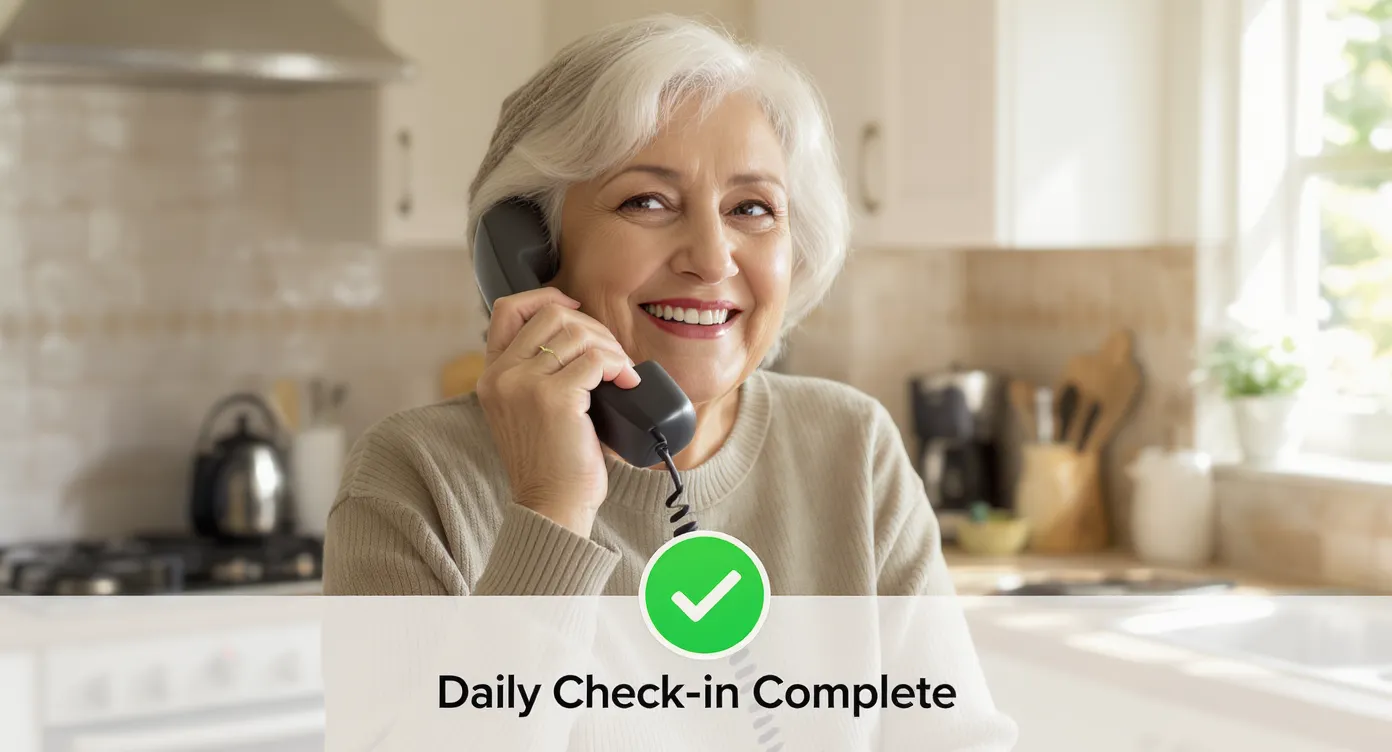Few professionals understand the meaning of “round-the-clock concern” better than program directors at senior centers. Between exercise classes, meal services, and social events, staff keep members safe while they are on-site. But what about the 18 or 20 hours a day when older adults are at home alone?
Research from the U.S. Centers for Disease Control and Prevention shows that more than one in four Americans aged 65+ experiences a fall each year (CDC, 2024). Even minor medical events can quickly escalate when nobody realizes help is needed. Adding an automated daily check-in system fills that critical gap and reinforces the continuum of care senior centers strive to provide.
The Safety Gap Between Center Visits
- Average senior center member spends 3–4 hours per visit. The remaining 20+ hours are unsupervised.
- According to the National Institute on Aging, isolation increases hospitalization risk by 32 percent (NIA, 2023).
- Family caregivers often live far away or work full time, limiting their ability to call every day.
Daily wellness verification is not a luxury—it is becoming an operational necessity as centers serve larger, older, and potentially frailer populations.
Why Automated Check-in Calls Outperform Manual Phone Trees
| Strategy | Staff Time Required | Reliability | Response Speed | Cost Scalability |
|---|---|---|---|---|
| Manual call tree | High (5–10 min per member) | Varies by volunteer | Slow if voicemail | Linear (adds staff) |
| Automated call service | Seconds to configure | Consistent 365 days | Instant SMS or email alerts | Flat monthly rate |
Manual phone trees build community, but they can collapse during holidays, staffing shortages, or severe weather. Automated systems supplement personal connections without burdening staff.
Key Advantages for Senior Centers
- Fast incident detection: Members press 1 and # to confirm they are okay. If they miss the call, alerts go to staff or family in seconds.
- Resource optimization: One dashboard replaces dozens of outbound calls, freeing your team for in-person engagement.
- Custom care circles: Add adult children, neighbors, or case managers so everyone receives the same real-time update.
- Data-driven oversight: Exportable reports document wellness contacts for grants, accreditation, and risk management reviews.
- Peace of mind as a member benefit: A tangible safety service can boost retention and word-of-mouth referrals.

How ConfirmOk Fits Seamlessly Into Existing Programs
ConfirmOk’s automated check-in platform was designed with senior service organizations in mind. No wearable devices or smart speakers are required—just a telephone number.
- Automated daily check-in calls at the time you choose
- SMS check-in option for tech-savvy members
- Unlimited care group members so the right people are informed
- Flexible scheduling for weekdays only, weekends, or multiple calls per day
- Secure encrypted data storage that meets modern privacy standards
If a member does not respond, the system can notify caregivers first or escalate directly to emergency dispatch based on your center’s policy. Because calls originate from ConfirmOk’s cloud infrastructure, local phone lines stay open during disasters.
For a closer look at feature details, visit the ConfirmOk Features page.
Step-by-Step Implementation Guide
- Identify high-priority participants
Start with members who live alone, manage chronic conditions, or have a history of falls. - Collect preferred contact methods
Landline and mobile numbers work equally well. ConfirmOk does not require special equipment. - Set schedules and escalation paths
Morning calls are popular, but lunch-time check-ins capture post-medication side effects. Alerts can route to staff email, SMS, or both. - Educate members and families
Provide a simple handout explaining that they will hear “This is your ConfirmOk daily check-in. Press 1 then #.” - Pilot, evaluate, expand
Most centers launch with 15–25 members, measure missed-call rates, then roll out to the wider community within 60 days.

Addressing Common Concerns
Privacy is a top question. ConfirmOk stores all call logs in encrypted U.S. data centers and never sells personal information. If your organization receives Older Americans Act funding, daily check-ins may help satisfy Section 102(a)(1)(B) safety assurances. Budget wise, centers often reallocate funds from manual wellness calls or leverage local grants focused on fall prevention and aging in place.
The Return on Prevention
The average cost of an emergency department visit for a fall injury in older adults is $3,216 (Agency for Healthcare Research and Quality, 2024). Avoiding even one hospitalization can pay for multiple years of automated check-in service. Equally important is the intangible value of member confidence and family trust in your program.
Ready to Strengthen Your Safety Net?
Adding ConfirmOk check-ins between visits transforms senior centers from activity hubs into 24-hour wellness partners. Implementation is quick, affordable, and requires no new hardware.
For personalized onboarding assistance, email [email protected].
Start protecting your members today—visit ConfirmOk.com to begin your free trial and experience the difference daily peace of mind can make.

